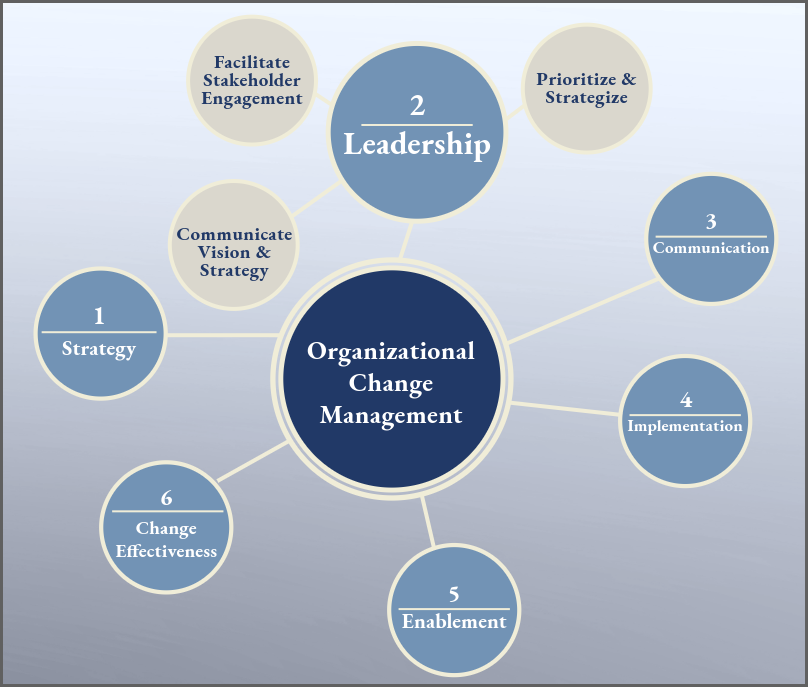Organizational Change Management Consultant Alaina Mazurkiewicz continues her OCM blog series:
The success of integrating SAP into an organization is heavily dependent on the presence of effective leadership. In today’s post, the second in our 6-part Organizational Change Management series, we focus on change leadership, emphasizing its importance in steering the organization through the transformation brought about by SAP implementation.

Change Leadership – A Crucial Component of Digital Transformation
Facilitate Stakeholder Engagement
When undergoing any significant change, engaging stakeholders at all levels is crucial. Leaders play a key role in bringing diverse voices to the table, ensuring a comprehensive view of potential impacts. A stakeholder analysis empowers leaders to identify and understand the diverse landscape of individuals and groups affected by the change, from executives to end users. By prioritizing stakeholders based on their influence and interest, and tailoring engagement strategies accordingly, leaders can effectively navigate the complexities of organizational change.
Prioritize and Strategize
With a clear picture of the organizational and stakeholder needs, leaders are tasked with prioritizing changes and formulating strategic responses that align with company goals.
Communicate Vision and Strategy
Once the groundwork of understanding the change is laid, leaders must then articulate a clear vision and strategy for navigating the SAP implementation. This is where a robust Communication Plan becomes invaluable, tailored by leaders to address the unique needs and concerns of their organization.

Change Leadership – Communication Responsibilities
- Identify Stakeholders: Effective leaders know their audience. Identifying who needs to hear these messages, from frontline employees to upper management, ensures that communication is targeted and effective.
- Define Key Messages: Leaders must distill the essence of the change into key messages that resonate with various stakeholder groups, highlighting the benefits and addressing potential concerns.
- Choose the Right Channels: Leaders must select the most effective communication channels to reach their audiences, whether it’s through corporate communication channels, direct emails, meetings, or informal chats–or, more than likely, a well planned combination of communication styles and outlets.
- Encourage Open Dialogue: Two-way communication is vital. Successful leaders foster an environment where feedback is not just welcomed but actively sought, creating a culture of open dialogue and continuous improvement. Implementing Q&A periods following town halls or presentations can turn open dialogue into a consistent practice.
Leading by Example: The Hallmark of Effective Leadership
The role of OCM change leadership goes beyond planning and communication. Leaders must also lead by example, embodying the change they wish to see. This involves demonstrating a commitment to the SAP implementation, being the first to adopt new practices, and showing resilience in the face of challenges. By doing so, leaders not only inspire confidence in their teams but also build a culture of adaptability and innovation.
Leadership is the linchpin in the successful management of change during SAP implementation. From understanding and strategizing to communicating and embodying change, leaders play a multifaceted role that directly influences the project’s outcome. As we move forward in our blog series, we will delve deeper into other critical aspects of change management, including communication strategies, implementation tactics, enablement tools, and measures of effectiveness. In each phase, the thread of change leadership runs strong, underscoring its importance in navigating the complexities of change and steering the organization toward a successful future. Reach out via email or LinkedIn if you have questions about Organizational Change Management or need help finding OCM solutions for your business.
Follow this link to Part I in our OCM blog series: Change Management Strategy: OCM Blog Series, Part I.




